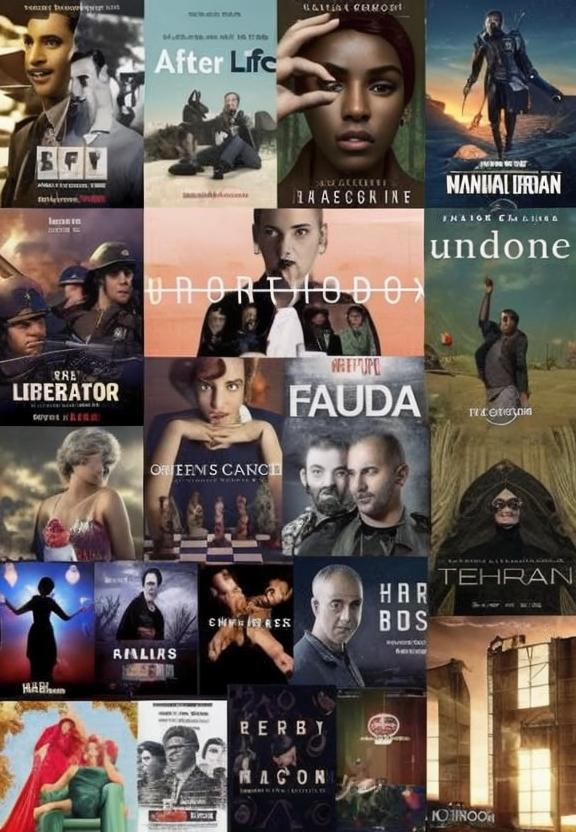In an era where gripping TV series and unforgettable cinematic moments dominate our screens, the idea of learning a new language through such captivating mediums is not only practical but immensely enjoyable. Imagine immersing yourself in the witty banter of “Friends,” the dramatic escapades of “Sherlock,” or the enthralling worlds of blockbuster films, all the while sharpening your English skills without even realizing it. This method turns traditional learning on its head, merging entertainment with education in a way that feels less like labor and more like leisure. In this article, we’ll explore the best methods to harness the power of TV series and movies to boost your English proficiency, transforming every Netflix binge session into a valuable linguistic journey. Ready to learn English the fun way? Let’s dive in!
Table of Contents
- Immersing Yourself in Authentic Dialogue
- Choosing the Right Series and Movies for Different Skill Levels
- Developing a Routine for Maximum Language Retention
- Engaging with Subtitles: When and How to Use Them
- To Wrap It Up

Immersing Yourself in Authentic Dialogue
One of the most enjoyable ways to master English through TV series and movies is by immersing yourself in authentic dialogue. Unlike traditional classroom settings, TV shows and films provide a rich tapestry of conversational nuances, slang, and cultural references that transform the learning experience. Try watching scenes that feature everyday interactions, paying close attention to the body language and tone. These elements often add layers of meaning that transcend the words themselves, giving you insights into how native speakers actually communicate. Subtitles can be a valuable tool here—start with English subtitles to match spoken words with text, and eventually, challenge yourself by turning them off.
Incorporating selective viewing strategies can amplify this learning method. Consider these approaches:
- Shadowing: Pause scenes and mimic conversations in real-time to practice pronunciation and intonation.
- Role-playing: Re-enact favorite scenes with friends or language partners to deepen your grasp of context and tone.
- Segment Focusing: Rewind specific dialogues to fully comprehend slang and idiomatic expressions.
Below is a table illustrating different techniques and their benefits:
| Technique | Benefit |
|---|---|
| Shadowing | Improves pronunciation and accent |
| Role-playing | Enhances practical usage and context understanding |
| Segment Focusing | Deepens vocabulary and idiomatic comprehension |

Choosing the Right Series and Movies for Different Skill Levels
One of the key aspects of utilizing TV series and movies to bolster your English skills is selecting the appropriate content based on your current proficiency. It’s crucial to start with materials that match your level—too advanced, and you’ll find yourself overwhelmed; too simple, and you won’t be challenged enough to grow. For beginners, opt for shows with straightforward dialogue, minimal slang, and clear accents. Consider the following recommendations:
- Beginner Levels: Animated series like Peppa Pig or sitcoms such as Friends that offer repetition and visual clues.
- Intermediate Levels: Dramas such as Stranger Things or comedies like The Office that introduce more complex vocabulary and varied accents.
- Advanced Levels: Mature dramas like House of Cards or historical films like The King’s Speech, featuring sophisticated language and diverse dialects.
In order to cater to different learning styles and preferences, we also recommend exploring a mix of genres and formats. Each type of show or movie offers distinct advantages:
| Genre | Suitability |
|---|---|
| Comedy | Simpler language, humor facilitates memory. |
| Drama | Complex sentences, emotional cues enhance understanding. |
| Documentary | Informative content, clear and formal language. |
Using this approach ensures that not only do you engage with content that is fun and interesting, but you also make steady progress in mastering the English language.

Developing a Routine for Maximum Language Retention
Crafting a perfect routine can be a game-changer for language retention. Here’s a step-by-step guide to integrating TV series and movies into your daily practice. Start by choosing a specific time every day dedicated solely to watching content in English. Consistency is key! Begin with lighter shows like sitcoms which are easier to understand for beginners, and gradually move to more complex genres.
<ul>
<li>Allocate 30-60 minutes daily</li>
<li>Select shows with subtitles</li>
<li>Note down new vocabulary</li>
<li>Review and use new words in sentences</li>
</ul>
<p>Enhance your routine by mixing various activities around your watching time. During your viewing, take short breaks to review and repeat dialogues. This enhances memory retention. Here's a sample routine you might find helpful:</p>
<table class="wp-block-table">
<thead>
<tr>
<th>Activity</th>
<th>Duration</th>
</tr>
</thead>
<tbody>
<tr>
<td>Watching with subtitles</td>
<td>20 min</td>
</tr>
<tr>
<td>Noting down new words</td>
<td>10 min</td>
</tr>
<tr>
<td>Rewatch without subtitles</td>
<td>20 min</td>
</tr>
<tr>
<td>Practicing dialogues</td>
<td>10 min</td>
</tr>
</tbody>
</table>
<p>By consistently following a structured routine, you'll build a strong foundation for both understanding and speaking English fluently.</p>

Engaging with Subtitles: When and How to Use Them
Subtitles can be a powerful tool when learning English through TV series and movies, enhancing your understanding and retention of vocabulary and phrases. When to use subtitles? It depends on your proficiency level. Beginners should start with subtitles in their native language to grasp the context. As you advance, switch to English subtitles. This shift challenges your listening skills while still offering textual support. For those with a higher level of fluency, try watching without subtitles to strengthen your natural comprehension abilities.
Wondering how to make the most out of subtitles? Here are some strategies:
- Compare and Contrast: Watch a scene with subtitles, then rewatch it without. This highlights the differences between what you hear and read.
- Take Notes: Jot down new words or phrases. Reviewing these notes later solidifies learning.
- Add Interactivity: Pause the show and repeat dialogue out loud, imitating pronunciation and intonation.
For a visual summary:
| Level | Recommended Subtitles |
|---|---|
| Beginner | Native Language |
| Intermediate | English Subtitles |
| Advanced | No Subtitles |
To Wrap It Up
And there you have it — the screen is no longer just a source of entertainment but a powerful ally on your journey to mastering the English language. By diving deep into the world of TV series and movies, you’re not only enhancing your vocabulary and understanding of colloquial speech but also immersing yourself in the rich tapestry of cultures and contexts that bring the language to life.
Every episode, every scene, and every line is a stepping stone towards fluency, making your learning experience both enjoyable and effective. So, grab your popcorn, hit play, and let the magic of cinema guide you through the intricacies of English. Remember, the subtitles are your co-pilot, and the pause button is your safety net. Happy learning and happy watching!






